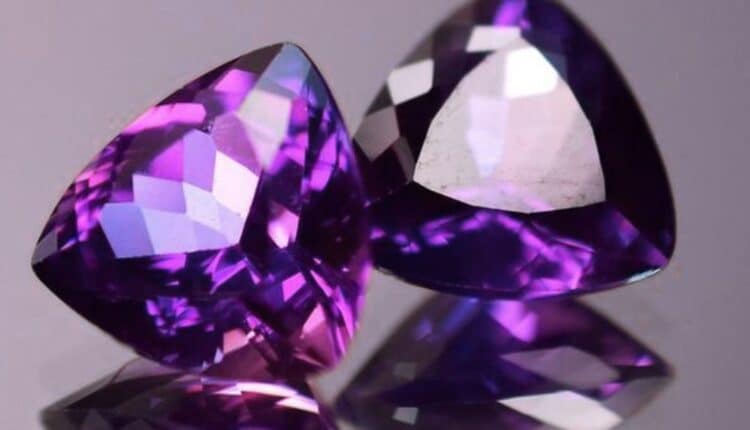The History of Amethyst: From Ancient Myths to Modern Ages
You know that feeling when a crystal’s color, texture, and energy seem to attract you? That’s exactly what amethyst does. With its dreamy shades of purple and calm presence, it’s easy to see why so many are drawn to it.
Today, amethyst gemstones for sale are easy to find. But this beautiful stone has traveled a long, fascinating road to get here. Worn by royalty, praised by mystics, and protected by myth, it has been cherished for centuries for what it represents.
If you’re wondering what makes this stone so special beyond its surface shine, then we’ve got you covered. In this article, we’ll dive into this stone’s history, ancient myths, and its place in the modern wellness world.
Ancient Origins and Royal Beginnings
Amethyst’s journey starts deep in the heart of the earth, forming inside volcanic rocks over millions of years. But the story of amethyst goes back at least 25,000 years. It was when prehistoric people in the area now known as France first discovered its captivating beauty.
By 3,000 BCE, ancient Egyptians were carving amethyst into intaglio gems and stringing beads for pharaohs. They believed that the stone could ward off harm and misfortune. These early amulets and ornaments weren’t just for show but were talismans of protection, often shaped like sacred animals or deities.
The Greeks, Romans, and the Legend of Sobriety
Amethyst’s name originates from the Greek word “amethystos,”. It means not intoxicated. That origin alone tells you a lot about how the ancients viewed this gem.
The Greeks and Romans really treasured amethyst stone. They believed that it could actually prevent intoxication. Hence, they’d drink from amethyst cups or wear amethyst jewelry to keep their wits about them at feasts.
The Legend of Dionysus
According to gemstone myths, the God Bacchus (Dionysus to the Greeks), in a fit of pique, vowed to unleash his wrath on the next mortal he met. That turned out to be a maiden named Amethystos. This young woman was on her way to worship Artemis. To protect her, Artemis turned her into a clear crystal.
Dionysus felt guilty and poured wine over the crystal, staining it a purplish colour. That’s how amethyst got its color, and its link to sobriety was born.
Because of this story, people wore amethyst to stay clear-headed and avoid overindulgence. Even today, some still see it as a stone of calm and clarity.
Amethyst in the Middle Ages and Beyond
Medieval European soldiers carried amethyst amulets into battle, hoping for healing and cool-headedness. The gemstone became an emblem of royalty and spiritual power.
Here’s why this gemstone has earned a significant place in history and till today:
- Anglican bishops still wear amethyst rings as a nod to the apostles’ sobriety at Pentecost.
- Amethyst was one of the twelve stones on the high priest’s breastplate, representing the tribes of Israel.
- Saint Valentine is believed to have worn a ring made of amethyst that had Cupid’s image on it.
- Leonardo da Vinci admired the stone for its ability to enhance intelligence and ward off bad thoughts.
Fact: Because purple dye was rare and expensive, amethyst jewelry became a mark of royalty and wealth. Kings and queens were often buried with amethyst jewelry to guide them in the afterlife.
From Rarity to Accessibility
For many years, amethyst was valued as much as rubies and emeralds, mostly owned by the wealthy. This changed in the 19th century when large deposits were found in Brazil and Uruguay, making the stone available to everyone. Today, Brazil remains a leading source, having some of the largest geodes to its name.
Fact: Amethyst is often gifted to mark the 6th wedding anniversary, symbolizing love and understanding.
The best place to buy loose gemstones online offers multiple cuts of amethysts.
Amethyst in Eastern Cultures
While the West saw amethyst as protection against drunkenness and spiritual temptation, the East valued it for inner peace. Here’s how:
Tibetan Spirituality
In Tibet, amethyst is considered sacred to Buddha. Tibetan monks often use amethyst beads in their prayer malas. They believe that the stone can promote calmness, spiritual awakening, and clarity of mind.
Chinese Traditions
In ancient China, amethyst was used in carvings and ornamental objects among the wealthy and powerful. It’s also connected to feng shui. Hence, it’s placed in certain corners of house to purify energy, create peaceful environments, and attract prosperity.
Symbolism in India
In India, amethyst is valued for its protective qualities and ability to provide spiritual strength. Since Vedic astrology links it to the planet Saturn, it’s believed to ward off negativity.
Amethyst in the Modern Ages
Today, amethyst might not be as rare as it once was, but it’s still just as adored.
With huge deposits found in Brazil, Uruguay, and Zambia, it has become far more accessible, yet it hasn’t lost its elegance. Therefore, it’s no longer just for royals but anyone who wants calmness and clarity in their life.
In the modern ages of amethyst, most people use the gemstone in the following ways:
- Wearing amethyst jewelry in the form of rings, necklaces, and bracelet
- Using small crystals for healing stress and anxiety.
- Meditating, visualization, or journaling with tumbles or stones
- Interior décor pieces like amethyst geodes and clusters to promote harmony in living spaces
- Polished towers or spheres placed on work desks or nightstands
The Stone That Stood the Test of Time
From myth to royalty, the history of amethyst stone shows us that this gem has always had a timeless appeal. More than a gemstone, it’s a story that spanned centuries.
And today, its story continues with anyone who’s attracted to amethyst and using it.


